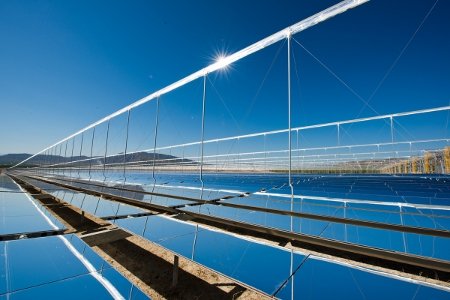More than 20 CSP projects with a total capacity of 1 GW have been preselected by the Chinese National Energy Administration for a federal feed in tariff (FIT) which is expected to be around 1.1 RMB. FRENELL’s Direct Molten Salt (DMS®) technology is a highly modular and low cost CSP system which provides a potential to further reduce the cost of CSP down to 0.8 RMB per kWh under Chinese solar radiation conditions. In addition to technical and commercial advantages of the CSP technology, FRENELL will bring fully automated mass production technology to the country.
“China and Germany played a key role in the substantial cost reduction of photovoltaic over the last years. We are confident that together with Chinese Partners, FRENELL will be contributing to a similar success in China’s emerging CSP market leading to an international breakthrough of solar power generation on demand”, says Martin Selig, CEO of FRENELL.
“Our fully automated mass production technology for primary reflector elements is a perfect supplement to China’s existing mass production capacity for vacuum absorber tubes ensuring that all components of the solar field can be mass produced in China”, says Dr. Max Mertins, Chief Technology Officer of FRENELL. “The modularity of our solar field and storage technology mitigates single point of failure risks. All components and systems applied in DMS® have been successfully applied in many commercial applications. Our DMS® system has been tested at our test facility in Spain over more than 2 years.” he adds.
Martin Selig, CEO of FRENELL, will attend the CSPPLAZA 2016 Annual Conference on June 16th-17th 2016, in Beijing, China and would be delighted to meet with interested customers.
How does DMS® solar technology work?
Sunlight is concentrated through the Linear Fresnel collector where parallel rows of flat-glass mirrors reflect direct solar radiation onto a fixed-position receiver unit. Molten salt in the receiver is heated up to 550°C. The molten salts collecting the daytime energy yield are stored within a Thermal Energy Storage system. The molten salt drives a salt/water heat exchanger to convert the collected heat into steam. The steam drives a steam turbine to generate electricity, which can then be fed into the local grid.




